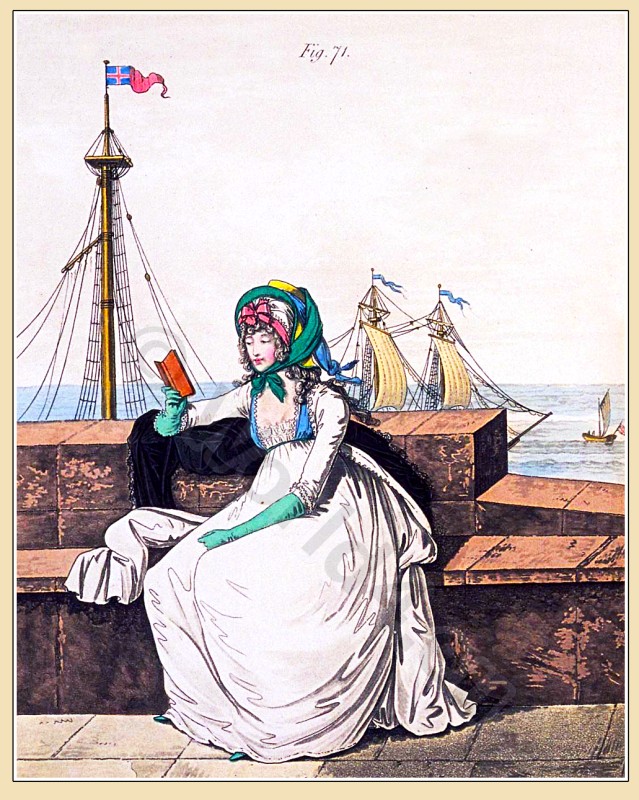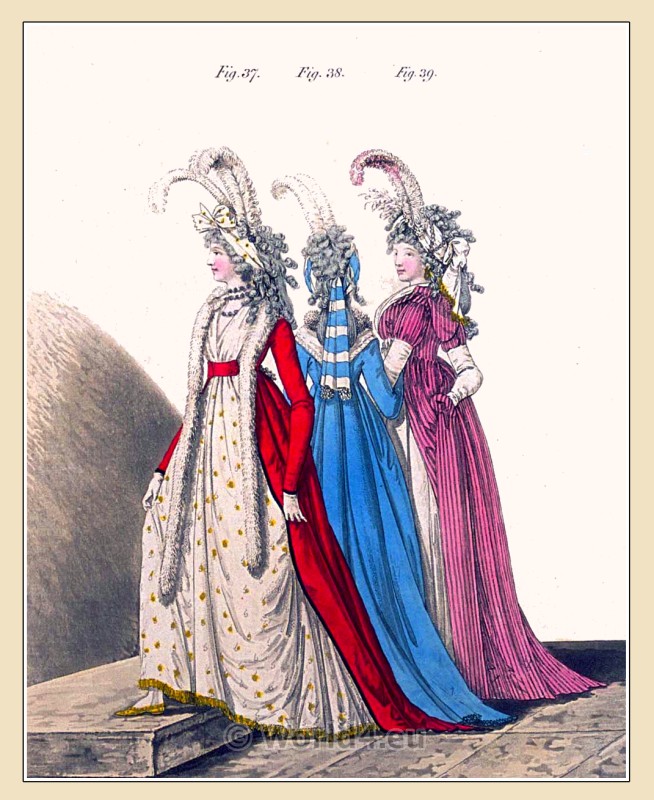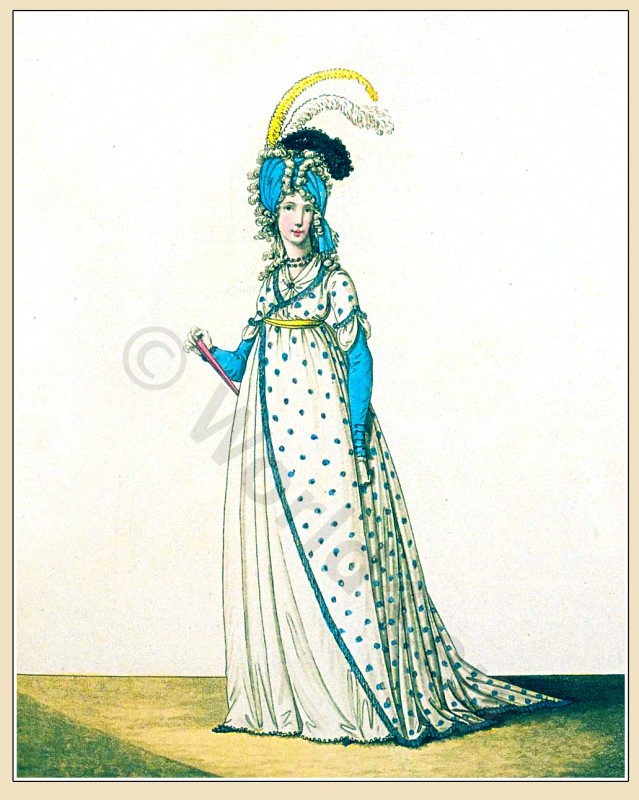Linon shawl, trimmed with applied tape.
Triple chaîne d’or à maillons plats, servant de bandeau. Schall de Linon, bordé d’un ruban appliqué.
Journal des dames et des modes. Costumes parisien 1798. France First Empire fashion, England Georgian, Regency fashion period.
Associated to:
- The Second Republic. 1848 to 1851. Victorian era. “Second Rococo”.
- Fashion in the Reign of Philippe. 1830 to 1848. Romanticism. Early Victorian era. Biedermeier
- Reigns of Louis XVIII. and Charles X. 1815 to 1830. The Restoration period. Biedermeier.
- Reign of Napoleon I. 1804 to 1814. First Empire, Regency period.
- Comparison of the French and English modes. The Regency fashion period 1808-1815.
- Fashion History France. On the history of costumes. Archives of French fashion







